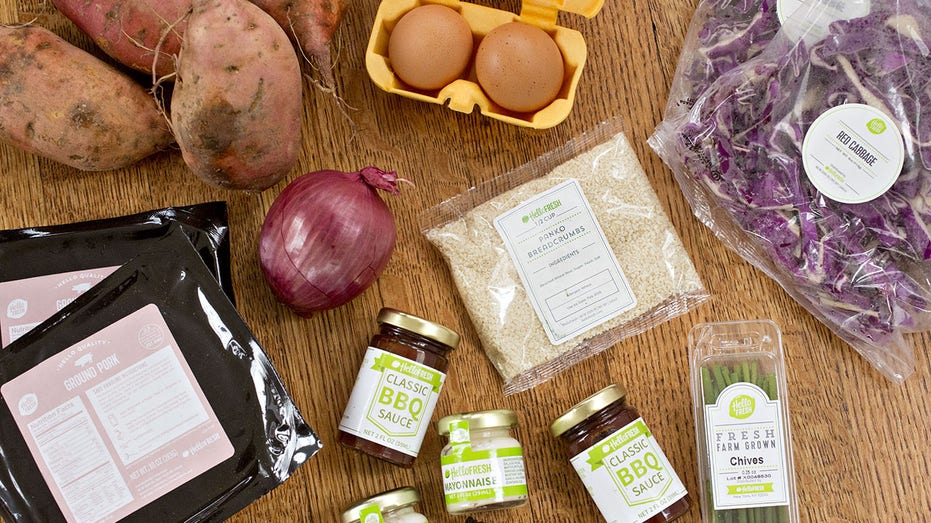Home food delivery’s questionable value, for consumers and investors
Shares of meal-kit company HelloFresh fell after it signaled a year of slow growth. It isn’t the only food-delivery company facing an uncertain future.
Groceries prices continue to soar in supermarkets
National Taxpayers Union Executive VP Brandon Arnold and Reach Global Strategies Founding Partner Anneke Green discusses how Biden is insisting the new inflation data is ‘out of date’ on ‘Fox Business Tonight.’
Serving food with a side of technology was the perfect pandemic business model. Now old doubts are back with a vengeance: Just how many people will pay what it costs to have grub delivered to their door?
HelloFresh shares fell 9% Tuesday after the meal-kit company said it was targeting revenue growth of anywhere between 2% and 10% this year, stripping out currency movements—a wide bracket but below most analysts’ forecasts at the midpoint. Its profit guidance also came in below expectations.
Based in Berlin, HelloFresh dominates the market for cook-at-home ingredient packages. In the U.S. it accounted for 78% of meal-kit sales last year, helped by various acquisitions, according to an analysis of consumer-purchase data by Bloomberg Second Measure. Home Chef, owned by supermarket chain Kroger, came next with 12%, followed by Blue Apron at 6%. Blue Apron’s stock has performed so badly that the New York Stock Exchange in December threatened to delist it.

HelloFresh Market Launches in U.S., Expanding Beyond Weeknight Dinners to Everyday Essentials (Courtesy Hello Fresh)
HelloFresh is clearly big in the meal-kit business. The question for investors is whether meal kits are potentially big in the food business outside a pandemic. They tend to be less expensive than eating out, but much more expensive than cooking from scratch: HelloFresh currently charges $60.95 to deliver a box of two meals for two people each. Bears argue they are little more than a niche solution for urban couples with busy jobs in boom times.
VINTAGE COOKBOOKS MAY BE WORTH THOUSANDS OF DOLLARS: HERE'S 6 REASONS WHY
The extraordinary sums HelloFresh spends on keeping customers support this thinking. The company’s marketing budget last year was 1.3 billion euros, equivalent to about $1.4 billion or 17% of its revenue. Yet it still lost customers, with 7.1 million active globally in the fourth quarter, down from 7.2 million for the same period of 2021. Growth mainly came from price increases. Marketing costs will rise again this year, the company said—a big factor in the weak profit guidance.
| Ticker | Security | Last | Change | Change % |
|---|---|---|---|---|
| KR | THE KROGER CO. | 63.92 | +0.76 | +1.20% |
| APRN | NO DATA AVAILABLE | - | - | - |
The company is one of a trio of embattled European companies that use technology to deliver food to homes in various states of preparation. London-listed Ocado disappointed investors last week by signaling that its U.S. partner, Kroger, wouldn’t roll out dedicated e-commerce warehouses stacked with Ocado technology as fast as previously expected. On an earnings call, Kroger told analysts that it was taking stock of the two warehouses it has already built with the British company to understand "how you optimize that model."

Ingredients from a HelloFresh AG delivery meal kit are arranged for a photograph in Tiskilwa, Illinois, U.S., on Wednesday, Nov. 15, 2017. HelloFresh AG is scheduled to release earnings figures on November 21. Photographer: Daniel Acker/Bloomberg via (Getty)
Then there is Just Eat Takeaway.com, the Anglo-Dutch takeout-delivery company that bought U.S. peer Grubhub in 2021. The business has long struggled to control costs, though its stock has found some stability in recent months as it has signaled an improving cash burn.
DOORDASH, ALDI EXPAND NATIONWIDE GROCERY DELIVERY TO OVER 2,100 LOCATIONS: 'HIGHLY REQUESTED'
All three companies wrestle with various forms of the same conundrum: Food is a huge market, but it isn’t well suited to e-commerce. Unprepared, it is bulky, heavy and of relatively low value, with complex refrigeration requirements. Prepared, it is of higher value but requires rapid delivery. Consumers are happy to take deliveries when the cost is subsidized by investors, but when it isn’t the market shrinks fast.

A shopper checks eggs before he purchases at a grocery store in Glenview, Illinois. (AP Photo/Nam Y. Huh / AP Newsroom)
CLICK HERE TO GET THE FOX BUSINESS APP
At least the stocks aren’t expensive. After huge falls over the past two years, all three trade below their prepandemic levels and on low multiples of sales. With so much uncertainty about the future of food-tech business models, though, investors still need a stomach for risk.




















